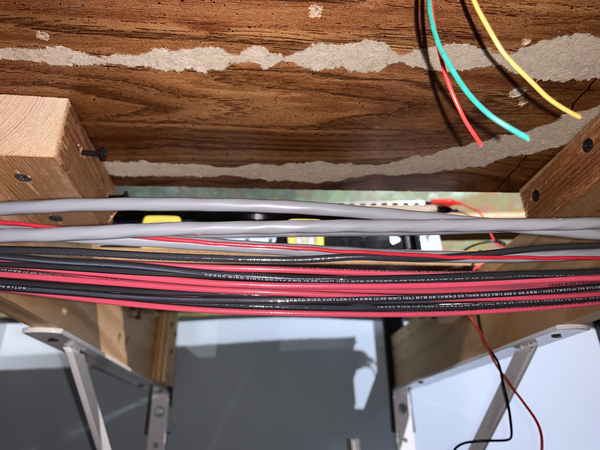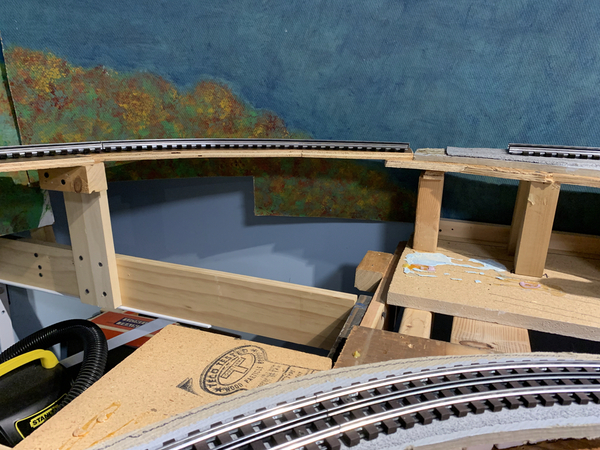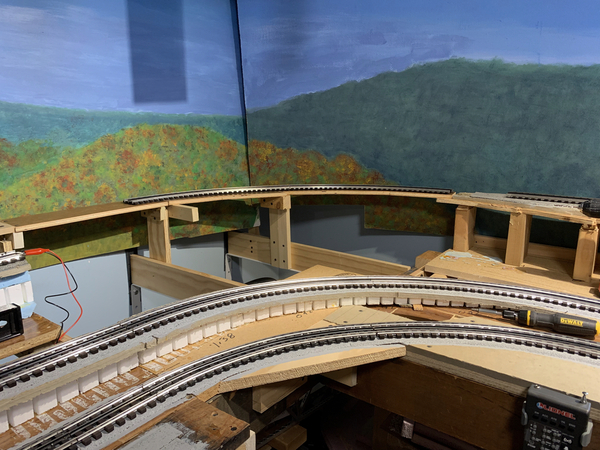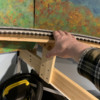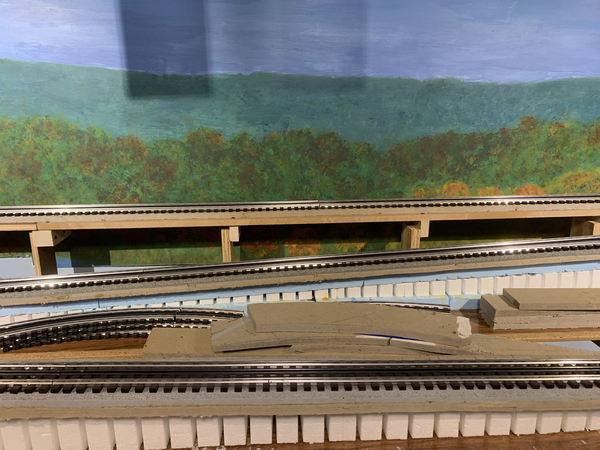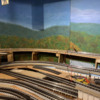Thank you, Rich Bill, Jay, Rubin, Andy, Mike, Sam, John!
Jay, I have no schedule in mind. If I did come up with a date, I'm sure I would overrun it.
Rubin, I did not seal my Homasote. I have read of folks sealing it, but I never did on previous layouts. Maybe I have gotten along fine because I have had dry layout rooms to work with. However, all the Homasote used on this layout came from a 12x4 sheet that was the top of a table that was used by a seamstress. Yes, that was not a typo, it was one complete sheet 12 feet long and 4 feet wide. The lady had pencil marks on it at one inch intervals, which can be seen in some of my photographs. It was worn along the edges and has lots of pin holes, but it showed no sign of taking on moisture. It had been in a basement room for years right beside a utility room with a sump pump. I assumed if it held up there, it would hold up in my dry room that is above ground.
No apologies needed. It was probably discussed before, but in 84 pages, I don't expect anyone to look for it. I actually bought the backdrop from a Forum member who had it painted on Masonite for his layout. He decided to go with photographic murals for his new layout, so this wasn't needed. I thought it would work for my layout, which was already under construction. I swapped some sections around to get it to fit my room better. I cut some sky off to fit the long wall with the bulkhead that encloses the exhaust pipes for the furnace and dryer. Since I didn't plan ahead, the longest sheet was a bear to get over the layout and into place. I did plan ahead in that I left a 1" gap between the joists and the wall, so for the most part the Masonite just balances on the brackets that support the joists. I had planned to put up 1x2s screwed to the wall and attach the backdrop to that. It was a bit cumbersome, so I just attached it to the wall studs with screws. I didn't want to, but figured, the wall would need spackled and repainted whenever the layout is taken down by me or someone else, so why not.
Andy, the above paragraph shows I didn't plan as well as I would have liked, but you are right, there is a good bit of planning here. After 6 years, I guess it shows.
Mike, your wood looks like some of mine. I'm glad to see you are making progress on the benchwork for the loop. Yes, we are in the same boat, reworking some of our layouts.
Sam, I'm glad you took a look over what has been going on! It certainly has been a long haul, but there are scads of good ideas and examples that others have contributed in all these pages. I hope you will keep on with us. I had read through many threads like this one, so when I started planning this layout, I was looking for ideas, and then just carried it on once I started building. You will certainly see a lot of mistakes and do-overs, but looking back over my life I think those are the best learing experiences.
John, I cut the Homasote with a bent utility knife that carped layers use. Some folks here say you can cut through half inch Homasote with 3 passes, but with a sharp blade it takes me 5 or 6. It is certainly better than using a regular saber saw blade, though some use a special knife blade for a saber saw. I'm not able to control a saber saw even on low speed, so I cut curves in plywood with a had keyhole saw.
I did not bevel any of the Homasote. I'm fortunate enough to get rather 90 degree cuts done. I figure when I ballast, some of the ballast will form a slope like real ballast. Thank you for the offer if I run out. I think I have enough, but you never know.













